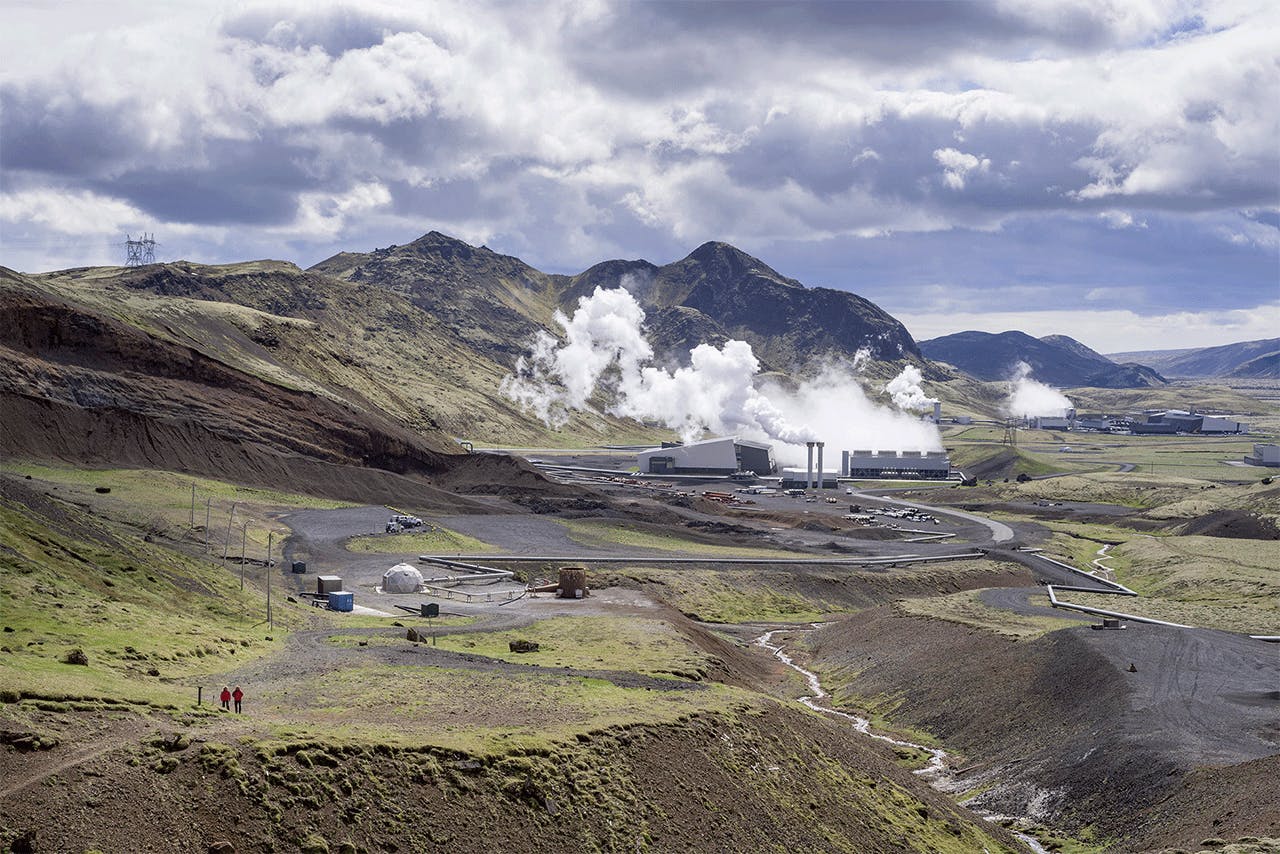When Yan Lavallée was a young boy, one of his favorite books was The Little Prince, by Antoine de Saint-Exupéry. A collection of short tales with big morals, it tells the story of the narrator, who has become a pilot, and a young child from a far-off planet whom he calls the Little Prince.
Among the many wonders of the Little Prince’s home planet are a pair of active volcanoes and one extinct one that he cleans out on a regular basis. “One never knows!” the Little Prince says. “If they are well cleaned out, volcanoes burn slowly and steadily, without any eruptions. Volcanic eruptions are like fires in a chimney,” the narrator writes.
“In volcanology we all know that book,” explained Lavallée, who was so enamored of the story he went on to earn a bachelor’s degree in earth and planetary studies at Montreal’s McGill University, a masters in space studies at the University of North Dakota, and a doctorate in volcanology at Ludwig Maximillian University in Munich, Germany. He now teaches volcanology and magmatic processes at the University of Liverpool in the United Kingdom. And while de Saint-Exupéry’s tale of the Little Prince who flew among the stars might’ve seemed like a work of fiction at the time, Lavallée’s long academic career is an indication that science fact may soon be catching up to science fiction.
For decades, we’ve run our world on hydrocarbons. Oil and gas, pumped out from underneath the ground at a prodigious rate, power our industry and our homes, and produce a huge number of products we use on a daily basis. But while we’ve managed to tame the geysers of hydrocarbons that squirt from our planet’s crust, for centuries we’ve struggled with the unpredictable power of volcanoes. Never mind cleaning them: Most of us never stray too close to a volcano for fear of an eruption.
But hidden beneath the caldera of these unpredictable beasts is power—and we’re closer than we’ve ever been to being able to use it at a large scale.
Geothermal sources are little more than a rounding error in the global energy mix, accounting for just 0.5 percent of the world’s total primary energy supply. And while the use of other renewable energy sources, such as solar photovoltaic and wind, has notched up double-digit growth in the last 25 years, geothermal energy has seen a minuscule increase. In part, that’s because geothermal is unpredictable, unreliable, and expensive. However, a closely allied but much more revolutionary source of energy holds plenty more promise.
One of the two craters on the Krafla caldera, near the northern coast of Iceland, is called Viti, which translates as “Hell.” Those old enough to remember the long stretch of eruptions and fissures that occurred in the 1970s and 1980s know why. The activity started around Christmas 1975 and carried on through nine springs, summers, and falls, until the volcano fell dormant around September 1984.
The disruption to this still and desolate part of Iceland wasn’t just what you could see above the surface. The eruptions caused a large magma chamber to form, and no one really knows its true size. In fact, nobody even knew quite where it was until a consortium of four private energy companies and the Icelandic National Energy Authority, called the Iceland Deep Drilling Project (IDDP), began drilling a borehole into Krafla. They were seeking supercritical fluids—highly compressed gases with characteristics of both liquid and gases.
The scientists behind the consortium had expected to find something around 16,000 feet (4.9 km) below the surface, so when the drill bit struck a massive magma pocket at 6,900 feet (2.1 km) in 2009, everyone was surprised (and slightly scared).
Rather than pick up and run from the potential peril, the Krafla discovery spurred a group of 70 scientists to repurpose the hole that had been drilled. The Krafla Magma Drilling Project was born. “Krafla is the only place in the world where we can pinpoint the exact location of a magma chamber, making it the best and only place on Earth to do this,” explained John Eichelberger, a professor of volcanology at the University of Alaska, Fairbanks.
And that’s not all. “There was a ton of energy coming out of that magma,” said Lavallée. “It was a lot hotter than the supercritical fluid they were after. Rather than fluid at 400–500 degrees Celsius, they found a magma source that’s 850 degrees. There’s a lot of energy there, and that’s super interesting.”
After investigation, the first borehole that the IDDP drilled was too damaged to experiment on. A second IDDP borehole has been drilled, with flow test results expected shortly. (Scientists who worked on the second IDDP well declined to speak for this story, citing embargoes that prevented them from talking even generally about the project.)
The parties involved in the Krafla Magma Drilling Project have instead decided to go it alone, working up plans for the Krafla Magma Testbed (KMT) project, which will drill a hole to a similar depth of the first IDDP well to try and learn more about the extraordinary pocket of magma that sits underground.
The goal is twofold: First, from a volcanology standpoint, to increase our understanding of this unpredictable natural phenomenon. “You can imagine if we have a pressure sensor inside a magma chamber and a temperature recorded, we can improve out models,” said Lavallée. But after that, they’re looking to explore the potential of harnessing that energy as a world-changing source of power.
“Utilizing geothermal energy from the near-magma environment is a very exciting next step for the geothermal industry,” said Sigurdur Markusson of Iceland’s national energy company, Landsvirkjun.
Lavallée goes further. “If this works, all of a sudden there’s a source of energy that’s available to a lot of countries,” he said. “For now we’re only using geothermal for a very small end. It’s a fraction of a percent of our energy production, but in principle, there is a ton more to be explored.”
Take a one-liter beaker of magma and cool it slowly to room temperature, and you’ve produced a megawatt of energy. “That’s just a liter!” exclaimed Lavallée. No one has done the full calculations, but magma bodies are believed to be linked to the size of the calderas which sit above them. There are some calderas worldwide that are hundreds of square kilometers. “This is huge in terms of energy resources,” Lavallée said. “It can power entire countries for years from a single body.”
Worldwide, 800 million people live within 60 miles (100 km) of an active volcano. The potential for them to be supplied with cheap, renewable, natural energy is tantalizing. But the team behind the KMT is taking things slowly: They’re all too aware that proximity to a potentially life-changing energy source also means proximity to a potentially dangerous volcano. “There’s a lot of concern with it, too. You can imagine if someone was to just drill in any magma chamber and that system was primed to erupt, you could trigger it,” explained Lavallée.
Lavallée visits Krafla once a year. His last visit was in September. “First of all, it’s beautiful,” he said. “One of the most beautiful areas.” The testbed site is around a 30-minute drive north of Mývatn, a still, serene lake and a tourist town with thermal baths, a small-scale demonstration of the potential might of magma.
And unlike large-scale drilling projects for other sources of energy, the locals welcome the potential of magma power. “We were wondering how the people will respond to our initiative in the long run,” admitted Lavallée. “In Iceland, it was a very opposite response to what we’ve seen elsewhere. They’re very, very happy to have us there and do this. I guess they’ve lived with eruptions for a long time. Some of the people were asked if they thought this would trigger an eruption, and their answer was, ‘Well, the volcanoes are erupting anyway, and we learned to live with that.’”
For now, things are moving slowly. The KMT team is all busy with other projects, and the unlocking of a potentially game-changing energy resource takes less precedence in their lives. The fact that the initial IDDP hole had to be sealed up with concrete and a new hole dug pushed back the project even further. Within a decade, Lavallée and his colleagues hope to have a scientific base built at Krafla, and to have one or two boreholes operating, producing early experimental results.
But time’s catching up with Lavallée. He’s 40 years old, and when asked if he thinks we’ll be seeing major production of magma power in his lifetime, responds, “I really hope so.” Support from the traditional hydrocarbon giants—the Shells, the Statoils, and the Schlumbergers of this world—would make the world of difference. “They have the power of accelerating things manifold,” he said. “The day they decide to go more into geothermal, this is what will make the switch for us.”
Lavallée tells me he’s smiling over the phone from his office in Liverpool, remembering his childhood reading The Little Prince and his obsessive cleaning of the volcanoes.
“If you think about it, that’s where we are,” he said. “Can we clean our volcanoes? Can we get something out of them? Can we alleviate the danger?”
There’s a pause. “It’s often easy to think about the future and think in the next century, people will do this,” Lavallée continued. “But the reality is we know where that magma body is now. In 50 years that magma body might be cooled. It might not exist anymore. The opportunity is really now. And we’re starting now while we can.”











